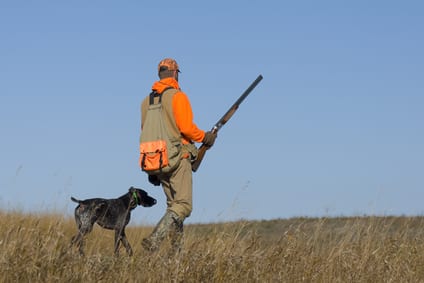When you get your new gun dog, you have a decision to make when it comes to their pup: professional or personal training. A Labrador Retriever that’s already trained costs upward of $3,000 depending on where you get it, according to gundogsonline.com. Training classes for your new pup will cost up to $700 or more per month or could be paid for by the hour. Needless to say, Fido can turn into quite a big investment.
You can save some money and personalize your dog’s training by teaching him yourself. Doing the training yourself is not only a great experience for both you and your dog, but will also serve as the start of a lifelong partnership and friendship. Keep in mind these four critical aspects of training and rest will be easy.
Know Their Genetic Tendencies
When choosing the right dog, consider what breeds are best for your living arrangement and needs. Beagles are known for their hunting pedigrees, but also for their incessant howling. American Fox Hounds are also great hunting companions, but need a lot of exercise and open space. When choosing your gun dog, make certain it will be able to adapt to your home environment.
An apartment is not the best home for a Fox Hound or Brittany Spaniel. Likewise, a quiet, suburban neighborhood is not an ideal home for a Beagle because of the noise factor. However, there are ways to train your dog — whatever the breed — so they fit in better with your lifestyle and family. For example, some owners utilize dog training collars to reinforce the “quiet” command and keep neighbors happy.
Introduction To Water
If you plan on hunting waterfowl, you should introduce your pup to water around the eight-week mark, suggests gamebirdhunts.com. It’s best to start in a small wading pool so the dog is not overwhelmed or shy about getting in. You may have to get into the water yourself before the dog will follow. Taking your dog on a boat ride is a great way to get him acclimated to the water. If you don’t boat often, make sure you know the regulations for boating in your area. For example, in Wisconsin you need a boating safety certificate to operate a motorized watercraft, and you can get one online at sites like BoaterExam.com. Taking your dog out on the water when he is young can be a huge benefit. Teach the dog that water is fun and a big part of what is to come in his life.
Discharging Weapons
The worst possible position you can put your dog in is taking him on his first hunting trip without first exposing him to the sound of gun fire. This is the best way to cause your dog to become gun-shy (startled by the sound) and will create a major headache for you trying to cure it. Most experienced hunters believe gun-shyness is a man-made phenomenon due to improper introduction of gun report noise to the dog.
Avoid firing guns while the pup is eating or drinking. Start out with a smaller caliber and discharge from a distance to see their reaction. If the dog is not bothered, move closer for the next shot. Some dogs will even associated the site of a gun with fear if the first time they hear it discharged is also the first time they see one. Place a rifle (or toy rifle if you have kids) near the dog’s food bowl so it can associate it with something good. This entire experience will be fun and educational for your dog if done correctly.
Introduction To Game
As with gun fire, you do not want to destroy your pup’s confidence by making him chase down an animal that is much faster and larger than he is. The best training method for small game hunting is to have him chase a rabbit or clipped-winged pigeon around a confined area. The key is to build its confidence to ultimately start tackling larger game.
Training your dog can be as fulfilling as the hunts themselves. The more disciplined you are in training, the more disciplined the dog will be while hunting.



